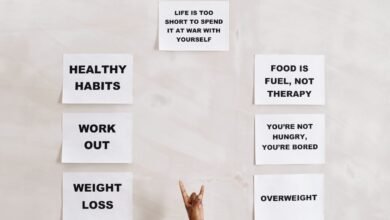Growth of Mental Health Apps Continues Post-Pandemic: A Digital Wellness Revolution

In the years since COVID-19 reshaped our lives, one thing has become clear: mental health is no longer an afterthought; it’s a daily priority. As more patients look for convenient, private, and affordable ways to support their emotional well-being, the digital world has responded.
Enter the era of the mental health app. Today, more than ever, people are turning to apps for support, reflection, and healing. And the growth isn’t slowing down. Post-COVID-19 data shows a continued boom in mental health services delivered through mobile platforms.
Mental Health Apps: A Lifeline in a Post-COVID-19 World
During the COVID-19 pandemic, access to in-person therapy was limited. Lockdowns, isolation, and rising stress levels pushed millions of people online, not just for work and social interaction, but for mental wellness support. That’s when the mental health app industry exploded.
Apps became the new lifeline. They offered:
- 24/7 access to tools and support.
- On-demand services for anxiety, depression, and stress.
- A safe, digital space for reflection.
- Flexible solutions for people who couldn’t or wouldn’t seek traditional therapy.
Now, long after restrictions have eased, these apps remain a core part of everyday wellness for millions.
The Power of Digital Mental Health Services
So why are mental health apps still growing? It comes down to three key things: access, convenience, and results.
- Access for All
One of the biggest benefits of a mental health app is that it removes barriers. Whether you live in a remote area, can’t afford weekly therapy, or feel uncomfortable opening up face-to-face, a digital solution gives you access to help on your terms.
- Real-Time Support, Anytime
Whether it’s the middle of the night or a stressful workday, mental health doesn’t wait. With apps like Calm, Headspace, and BetterHelp, users can get the services they need in real time, from meditation to therapist messaging.
- Data-Driven Personalization
Today’s top apps use data to tailor support. They track mood patterns, offer custom plans, and even use AI to suggest tools based on your emotional trends. This makes every session feel personal and targeted.
Social Shifts That Support App Growth
The social conversation around mental health has changed dramatically since COVID-19. Stigma is decreasing. People now understand that emotional wellness is just as important as physical health.
This new attitude means more patients are open to trying an app as a first step or even a long-term solution. Social media, influencers, and healthcare providers are also promoting mental health apps as normal and effective.

The Most Popular Apps Making a Difference
Here’s a quick look at some of the top apps reshaping the world of digital wellness:
- Headspace: Mindfulness, stress relief, and sleep support.
- Calm: Breathing techniques, sleep stories, and meditations.
- BetterHelp: Connects patients with licensed therapists via chat or video.
- Talkspace: Offers professional services tailored to anxiety, depression, and trauma.
- Happify: Uses positive psychology and science-backed exercises to improve mood.
Each app offers different services, but all share a common goal: making mental health support more accessible in the modern world.
What the Data Says
The data doesn’t lie. A recent report found that downloads of mental health apps surged more than 30% during the height of COVID-19, and have continued rising every year since. Even health insurance companies are now partnering with app developers to offer digital services as part of patient care plans.
This growth proves that digital mental health is not a phase, it’s a fundamental shift in how we approach emotional wellness.
How to Choose the Right App for You
There’s no one-size-fits-all solution, but here’s what to consider:
- What kind of services do you need (therapy, stress management, sleep)?
- Do you prefer a self-guided app or one with live sessions?
- How much time do you have each day for mental wellness?
- Is data privacy important to you? Look for HIPAA-compliant apps.
- Read article reviews and user feedback to see what other patients are saying.
Final Thoughts: A New Era for Mental Wellness
As the world grows more connected, the way we care for our minds is evolving. The continued growth of mental health apps post-pandemic shows a clear shift toward smarter, more accessible, and more flexible support systems.
This article isn’t just about trends it’s about a movement. One where every person, no matter their background or location, has the access and tools to take charge of their emotional health.
If you’ve been struggling or just want to feel better every day, maybe it’s time to try a new approach. Your next chapter could begin with a single download.



